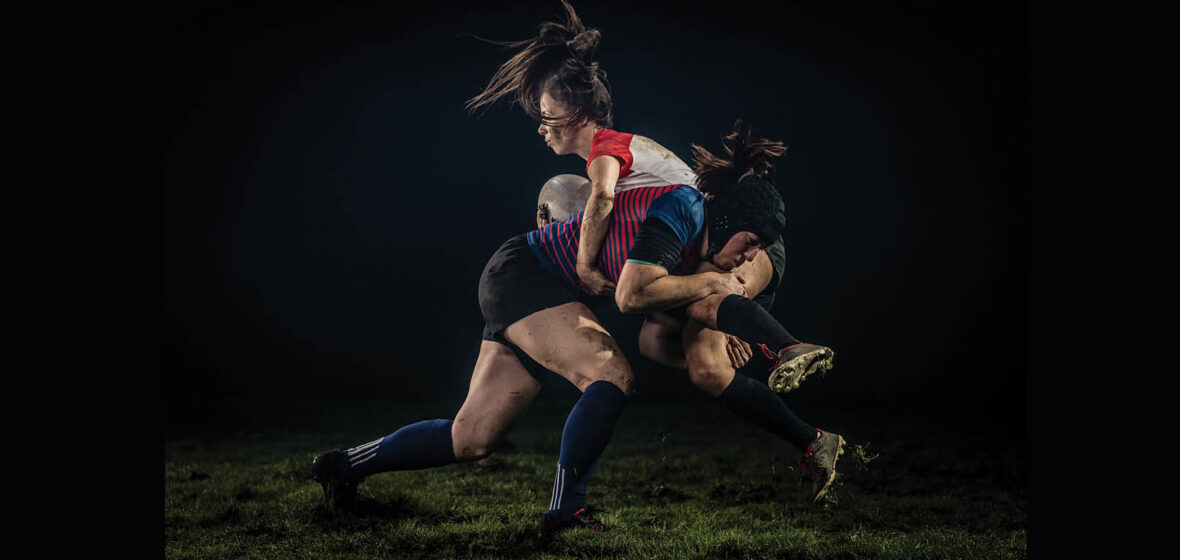As the science on the long-term and potentially tragic consequences of CTE grows ever stronger, pressure is mounting on professional sporting bodies to do more to protect their players. But if regulation fails, will a class action succeed?
In 2017 the Australian Football League launched its women’s competition. Women had been playing Australian rules football since at least the late 19th century and for several decades they had competed in emerging state league competitions. With the launch of AFLW, it was finally time to go pro.
With the 10th pick of the inaugural draft, the Adelaide Crows selected promising 22-year-old Heather Anderson. Heather started playing rugby aged five and soon switched to Aussie rules, where she quickly emerged as a star. Netball was a no go.
‘No contact, too many skirts’, she told Mamamia in 2017.
The Crows would go on to win the inaugural premiership. Heather, who played in every game, became a cult figure, sporting a pink helmet to help her vision-impaired mum identify her on the field. Off the field, Heather was a medic with the Australian Defence Force. She completed a degree in Paramedicine, commenced a degree in Psychology, and continued to attend the Crows’ matches even after a series of shoulder injuries ended her promising career.
Then, in November last year came a tragedy. In news that left the tight-knit AFLW community devastated, Heather’s father announced she had died by suicide aged 28, in an army barracks in Perth. Her death appeared wholly unexpected.
Lost and reeling, Heather’s family donated her brain to the Australian Sports Brain Bank. They sought to understand why someone with none of the traditional symptoms of serious mental illness chose to take her own life.
The explanation was jarring.
Researchers identified multiple lesions and abnormalities throughout Heather’s brain, completely inconsistent with a regular brain of someone her age. Heather would become the first professional female athlete anywhere in the world to be diagnosed with chronic traumatic encephalopathy, better known as CTE.
CTE is a degenerative brain disease caused by repeated abuses to the head. It can only be diagnosed after death. Many years after the hits have ceased, people with CTE may suffer memory loss, depression, aggressive and impulsive behaviour, paranoia, and suicidal thoughts.
The severity of CTE is exacerbated by the length of one’s career, related to the number of head impacts absorbed and the cumulative force of those hits. For professional athletes like Heather, who grew up playing contact sport, the risk is greater than for those who discovered their sport later in life.
Heather was the first female athlete to be diagnosed with CTE, but she will not be the last. There were almost one million women and girls playing contact sport in Australia last year. According to the Royal Australian College of General Practitioners, “As women’s participation in contact sport continues to grow, so too does their risk of repetitive brain trauma.”
This is the harsh reality of the growing professionalisation and popularity of women’s sport. Along with the enormous benefits – perhaps most crucially financial and public recognition – come the dangers that currently pose a serious threat to the viability of the men’s game.
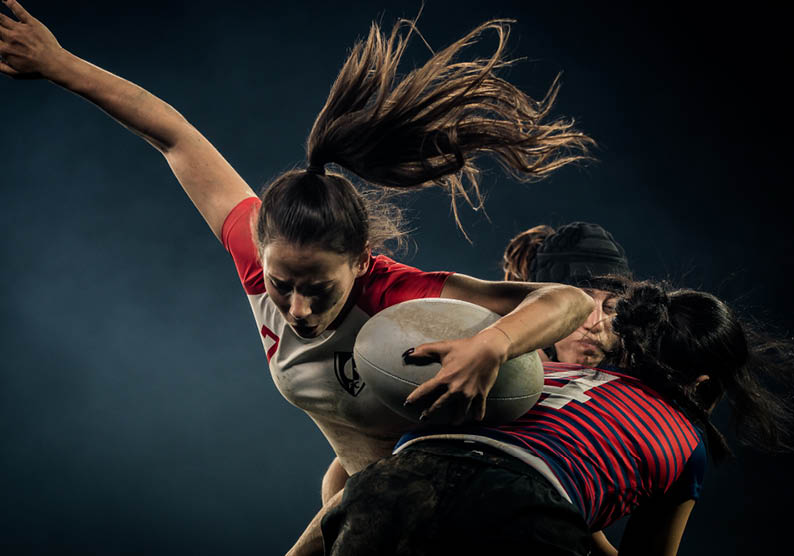
“The severity of CTE is exacerbated by the length of one’s career, related to the number of head impacts absorbed and the cumulative force of those hits.”
The lawsuits
On 14 March of this year, former Geelong premiership player Max Rooke commenced a class action against the AFL in the Supreme Court of Victoria. Rooke alleges that the AFL knew or ought to have known of the potential long-term consequences of concussion suffered by AFL players while training for and playing AFL football. He says the AFL breached its duty of care to the players by failing to take appropriate steps to prevent and reduce the risk of injury. He says this breach contributed to him suffering 30 alleged concussions, leading to cognitive impairment and psychiatric injuries.
The class action is brought on behalf of group members who played VFL/AFL football between 1985 and 2023 and suffered damage from head injuries causing concussions. At least 60 group members have already joined. Rooke’s solicitors, Margalit Injury Lawyers, expect hundreds more to join, each seeking about $2 million plus medical expenses.
Approximately nine months earlier, lawyers for more than 185 rugby union players and 75 rugby league players in the United Kingdom launched legal action in negligence against World Rugby, the Rugby Football Union, the Rugby Football League, and the Welsh Rugby Union, accusing the governing bodies of failing to protect players from permanent injury. The players allege the league had ‘disregard for player safety brain health at club and international level’, and failed to ‘take adequate steps to inform, educate or warn the claimants about the risks of permanent brain damage’, among several other serious allegations. The total number of claimants has increased to more than 450, including many diagnosed with early-onset dementia in their forties, and others who are on suicide watch.
Today, the AFL, NRL and most professional contact sport governing bodies are alert to the risk of concussion. AFL and NRL team doctors closely analyse each head collision immediately after they occur and require their players to leave the field to undertake a concussion test if the doctors identify a potential concussion. If the player fails, they cannot return for at least 12 days (AFL) or 11 days (NRL) respectively.
These developments are recent. Well into the 2010s, players would remain on the field after being concussed or potentially concussed, only coming off if they were knocked unconscious. In a hyper-competitive environment, players would convince their doctors that they were fine, and the doctors would take them at their word. In essence, Max Rooke alleges the club doctors, the clubs and the AFL all failed to protect the players from themselves.
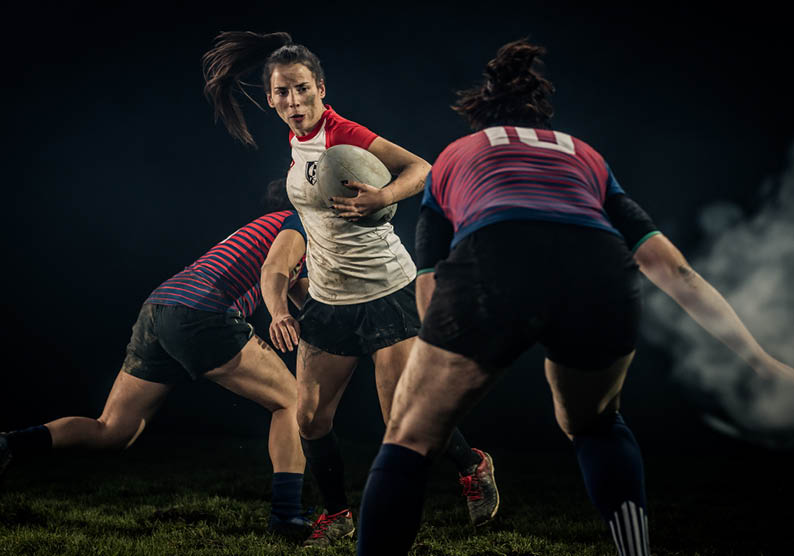
“Soon after late Richmond player Shane Tuck retired, he began to hear voices, and was unable to sleep without extensive medication. Unbeknownst to his family, his brain was slowly rotting away.”
Just three days after Rooke launched his class action, Katherine Tuck – the wife of late Richmond player Shane Tuck – commenced a similar proceeding against the AFL.
Shane Tuck played 173 games for the Tigers. He was a tough, “in-and-under” player, copping hits to his head on myriad occasions. Soon after Tuck retired, he began to hear voices, and was unable to sleep without extensive medication. Unbeknownst to his family, his brain was slowly rotting away.
In 2019 Tuck tried to take his own life and he died by suicide the following year. Tuck’s sister described his last days as “a war zone in his head.” An autopsy revealed he had suffered from severe CTE.
Katherine Tuck says that she has experienced serious mental harm from her husband’s death. Her class action is commenced on behalf of former VFL/AFL players from 1990 onwards who experienced head knocks and symptoms of concussions, and who have since suffered cognitive impairment, memory loss, loss of executive and motor functions, behavioural changes, and mood disorders. The proceeding is also commenced on behalf of family members of deceased former players who have since been diagnosed with CTE.
Tuck’s proceeding is likely to be discontinued due to a lack of funding. She and the other group members should become group members in Rooke’s proceeding and may be joined by former Geelong champion Gary Ablett Snr – one of the greatest players to ever play the game – who has commenced his own individual proceeding. According to Margalit Injury Lawyers, the AFL may be liable for up to $1 billion. The proceedings have precedent.
The NFL
From the 1920s until the end of the 20th century, CTE and sport-induced brain injuries were considered the sole province of boxing. Every game of American football contains hundreds of high-velocity head collisions, but this was largely accepted as a foreseeable risk of the job. Players, executives, fans and the media paid scant attention to the long-term repercussions of such a job.
In 2002, the forensic pathologist Dr Bennet Omalu (who would later be played by Will Smith in the film Concussion) diagnosed former Hall of Fame Pittsburgh Steelers player Mike Webster with CTE. Webster had died suddenly after years struggling with depression, drug abuse and cognitive impairment. He was the first NFL player to receive the diagnosis.
The NFL contested Omalu’s findings. For years the league denied the connection between football-related head trauma and neurological conditions, rejecting growing evidence and calling for the retraction of many of Omalu’s papers. As early as 1994 the NFL had established a Mild Traumatic Brain Injury Committee to examine the long-term effects of concussions on the brain. Yet as late as 2010, the Committee continued to reject independent expert evidence linking sport-related brain trauma to CTE. Dozens of former NFL players were diagnosed with CTE within that period; many of them died by suicide.

“Lawsuits are primarily about concussions – specifically the AFL’s and the clubs’ failure to diagnose and treat concussion, and to reduce the numbers of concussions by implementing appropriate rules and procedures.”
In 2013 the NFL agreed to settle a lawsuit brought by more than 4,500 players and their families who had accused the league of wilfully misleading its players over the long-term impact of head injuries. The original settlement figure (US$765 million) was relatively small considering the number of class members, and the NFL made no admission of guilt. CTE has since been found in the brain of almost every single NFL player who has been examined after their death, including Jovan Belcher, 25, who killed his girlfriend and shot himself, Aaron Hernandez, 27, who was convicted of first-degree murder and later died by suicide in prison, and Phillip Adams, 32, who shot and killed six people before killing himself.
While thankfully no such similar atrocities have occurred in Australia, past players are suffering. In an extended article for the Guardian in April last year, several former AFL players spoke about their ongoing battles with unprovoked aggression, debilitating headaches, depression, and anxiety caused by extensive head knocks throughout their careers.
Some struggle to remain employed, unable to write down directions from their managers or colleagues. Others “can no longer recall their most celebrated achievements”, while “many have lost their families – ripped apart by their broken brains and all the hurt that can entail.” Former NRL stars Wally Lewis, Mark Carroll, and James McManus are similarly struggling.
But such struggles will not necessarily translate to victories in the courtroom.
The legal roadblocks
In 2017, former Newcastle Knights and NSW representative player McManus became the first NRL player to take serious legal action against the sport over concussion, suing the Knights for $1 million. In 2021 the suit was settled in the Knights’ favour, with no award of damages.
Former Parramatta forward Brett Hornsell also sued the league in 2017 over its handling of his concussion but abandoned his claim four years later. And while various publications reported at length between 2019 and 2021 that personal injury firms were preparing to launch at least four class actions against the NRL, none eventuated, and none are foreshadowed.
It is possible these lawsuits and prospective lawsuits were abandoned because of a provision in NSW’s Civil Liability Act that provides a defendant is not liable in negligence for harm suffered from obvious risks of dangerous recreational activities. Courts have interpreted dangerous recreational activities to include some professional sports, and the NRL’s defence in the McManus case applied this argument. Victoria does not have an equivalent provision, which may bode well for the plaintiffs.
Nevertheless, the roadblocks remain significant.
The lawsuits are primarily about concussions – specifically the AFL’s and the clubs’ failure to diagnose and treat concussion, and to reduce the numbers of concussions by implementing appropriate rules and procedures. Yet, troublingly, concussion may not be the major cause of the players’ injuries.
According to doctors at the CTE centre at Boston University, approximately 20 per cent of the people they studied with CTE had never been diagnosed with concussion. The more likely cause of their CTE was the smaller, repeated hits to the head that did not cause symptoms and did not lead to concussion, known as subconcussive impacts.
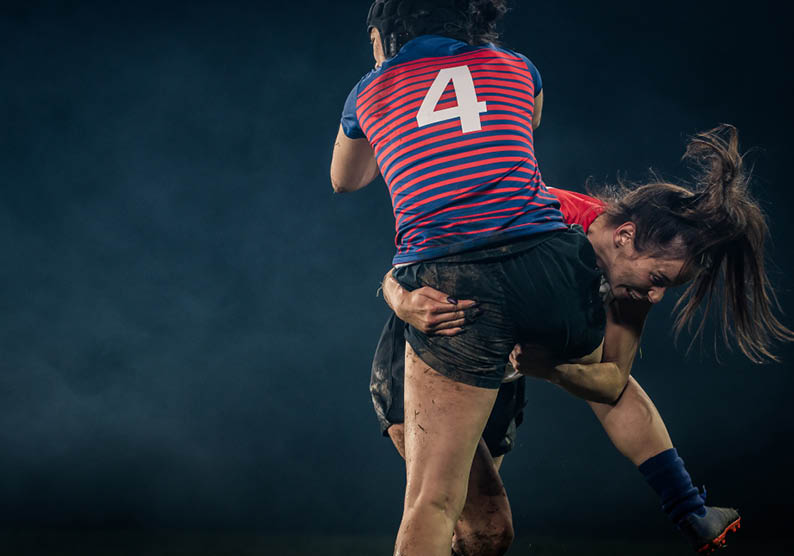
“While a government’s first duty is to protect its citizens, governments have delegated that duty insofar as it relates to professional sport to the leagues’ governing bodies, trusting them to protect their own players.”
‘Concussions were basically noise’
These are the words of Harvard Medical School Associate Professor Dr Daniel Daneshvar, who told The New York Times that the accumulation of subconcussive hits, not the number of diagnosed concussions, is the driving force behind long-term cognitive decline.
For Shane Tuck, Max Rooke, Gary Ablett and dozens of group members, each of whom played hundreds of games and likely experienced subconcussive impacts almost every week throughout their career, it is possible their symptoms would be the same even without ever suffering a single concussion.
And for today’s AFL and NRL players – who are less likely to suffer concussions and more likely to take recovery more seriously – the terrifying reality is that the risk of subconcussive impact and long-term cognitive decline remains.
The risk can yet be mitigated. The NRL has changed its rules around head contact. The AFL has outlawed dangerous tackles and increased penalties for off-the-ball bumps. Discussion is underway about reducing the number of contact training sessions. And it is possible – perhaps probable – that helmets will eventually become mandatory for all participants in Australian rules football and rugby league, including in the professional leagues.
Should the government step in?
Heather Anderson’s eye-catching pink helmet was an insufficient shield against 20 years of repeated head knocks, and despite massive advancements in helmet technology the dangers will always remain. All players accept a reasonable risk of injury when they step over the white line – a risk that is elevated in the professional game, where players are stronger, more courageous, and mocked for ever shying away from a contest. But if parents are to let their children play football in 2023 – when much more is known about the dangers of head trauma – it may be that governments have work to do to ensure those kids survive and thrive post-retirement.
Governments have historically deferred to the major sporting bodies to regulate major sports. While a government’s first duty is to protect its citizens, governments have delegated that duty insofar as it relates to professional sport to the leagues’ governing bodies, trusting them to protect their own players.
The leagues’ governing bodies have largely taken that responsibility seriously. The AFL and the NRL write the rules for their respective competitions, which trickle down with minimal adjustment into the amateur leagues at both the senior and junior levels. Governments fund the stadiums, but just about everything else is up to the sporting organisations, the sponsors, and the broadcasters.
This method (adopted by most democratic nations) has resulted in hugely successful and popular professional and amateur sporting competitions, particularly in Australia, where sport is as culturally significant as almost any other activity. Players have accepted the risk of injury – be it a several-week niggle or a season-ending broken leg – as a foreseeable and reasonable consequence of contact sport, and governments have been content to stay on the sidelines.
But the risk of life-threatening injuries was never contemplated under this arrangement – an arrangement that influential decision-makers are calling to be changed. In the view of an increasing number of lawmakers, as long as governments continue to permit the prevailing model of self-regulation, it is likely there will always be a conflict that threatens player safety.
The inherent conflict
On a cool, dry Saturday night in July of this year, the Adelaide Crows and crosstown rivals Port Adelaide were locked in battle in front of a packed crowd at Adelaide Oval. The “Showdown” is one of the biggest rivalries in Australian sport. With a top-two spot on the line for Port and a place in the finals up for grabs for the Crows, the latest encounter was even bigger than usual.
Port Adelaide trailed by 20 points early in the second quarter when its star defender Allir Allir sought to lift his side with an act of courage, sprinting backwards to attempt an intercept mark with eyes only for the ball. But as he extended out his arms, Allir didn’t see his teammate – the talented utility Lachie Jones – attempting the very same thing. The players’ heads thumped into each other, a sickening collision that hushed the crowd and caused the two teammates to fall to the ground, seemingly unconscious.
Although they quickly awoke, Allir’s and Jones’ fates appeared sealed. Concussion was all but inevitable in a collision that forceful, and in any event players are never allowed back on the field after losing consciousness or falling to the ground without protective action. Their day was surely done, and so too, perhaps, their team’s.
And then just minutes later Allir was back on the field. Players underdoing a concussion test must sit out for at least 15 minutes even if they pass the test, but the club doctors determined from a sideline review of the incident that Allir had definitively not sustained a concussion, such that he did not even need to take the test. Jones was ruled out, but according to the doctors he had only suffered a migraine (and crucially not a concussion), meaning he would be permitted to play the following week.
The Crows suspected foul play. Much of the football world accused Port Adelaide of risking its players’ safety for four points. But the club stood by its doctors.
Less than 48 hours after the collision, both Allir and Jones experienced delayed symptoms of concussion and entered mandatory concussion protocols, ruling them out for at least the following week. The doctors’ failure to follow the mandatory protocols had endangered the players’ safety for the perceived benefit of their team.
The AFL was furious and fined the club $100,000. But this was not an isolated incident. By consistently rejecting calls to appoint independent doctors to evaluate head injuries and override club doctors’ decisions, the AFL continues to enable this conflict.
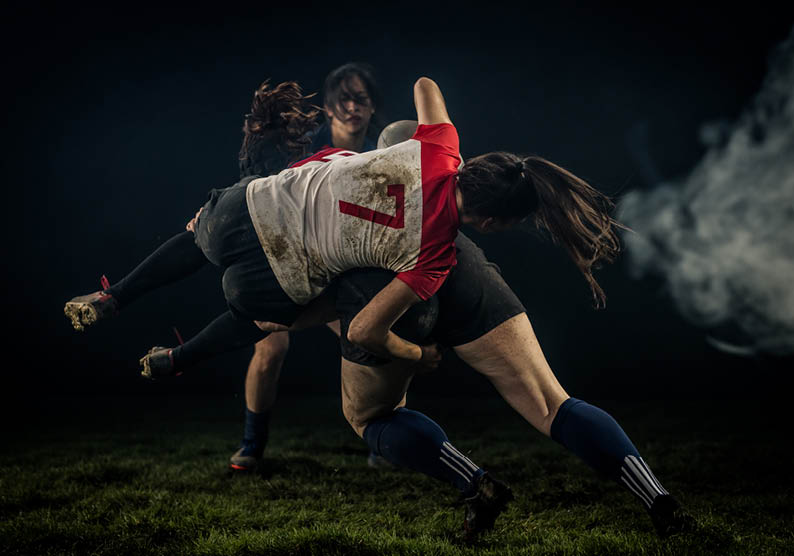
“Less than 48 hours after the collision, both Allir and Jones experienced delayed symptoms of concussion. The doctors’ failure to follow the mandatory protocols had endangered the players’ safety for the perceived benefit of their team.”
The Government’s report
Two months later the Senate Standing Committee on Community Affairs published a report titled ‘Concussions and repeated head trauma in contact sports’. The committee had received 92 submissions and heard from 84 witnesses. Perhaps unsurprisingly, the AFL, NRL and other sports-affiliated organisations contended the current approach involving self-regulation of head injuries is appropriate, emphasising that player health and wellbeing is a primary concern. A majority of the other stakeholders disagreed.
Athletes, families, health care professionals and public interest groups argued that the league’s governing bodies are putting self interest above player safety. They said the current approach is not fit for purpose and encouraged the government to step in.
The committee somewhat toed the line between the duelling narratives that emanated from the submissions, hesitant to set a strict timeline for the implementation of its recommendations. Nevertheless, the recommendations are powerful. They include the following:
- The government should develop a national strategy to reduce concussions in contact sports.
- The government should establish a body dedicated to research into the short- and long-term effects of concussions and repeated head trauma.
- The government should develop binding return-to-play protocols across all contact sports for all adults and children, with a greater role for government officials and medical experts in developing the protocols and overseeing their compliance. The protocols may include a mandatory 21 days out after concussion.
- The government should establish a National Sports Injury Database as a matter of urgency.
- Professional sporting codes should collect data on concussions and sub-concussive impacts and share the data with the National Sports Injury Database.
- Professional sporting codes should consider further rule changes.
- Professional sporting codes should ensure their athletes have insurance coverage for head trauma.
- State and territory governments should explore how professional sports people could be eligible for workers’ compensation.
The report also emphasised the need for strategies focused on children and those participating at the community level. Although most of the media attention with respect to concussion and head injuries is directed towards professional athletes, most contact sport participants are school-aged, are more susceptible to head injuries and take longer to recover. Children and adolescents rely on their parents to consent on their behalf to playing contact sport, but there are no legislated standards that determine the extent of information parents are required to know about the risk of head injuries in order to give informed consent.
The report found that further education and awareness raising measures are required to ensure that all players, coaches, parents, teachers and other sports participants can recognise the signs and symptoms of concussion, understand the basis of managing such injuries, and appreciate the potential risks.
In addition, it called for leagues to adopt a “conservative approach for children”, recommending that they return to their schooling prior to recommencing their participation in sport after sustaining a concussion.
Many neurologists, researchers and other experts have welcomed this “long-awaited” report, adding that they have been calling for governments to step in and act as a “neutral umpire” for decades. They now turn their attention to expected action.
What next?
It is well accepted that, since the long-term consequences of head injuries have been exposed, sporting bodies have begun to pay greater attention and adjust the rules to ensure the game survives.
Whether because of the threat of crippling lawsuits or out of a genuine desire to protect the players, the leagues have tinkered with rules to “protect the ballplayer” and especially, to “protect the head.”
Yet while the leagues emphasise that their number one priority is player health and safety, they will always have competing priorities, which threaten the efficacy of self-regulation.
Whether this landmark report leads to legislative change and effective action in combating the risks of head injuries in contact sport may very well determine the future success of those sports, and the future wellbeing of those playing.

